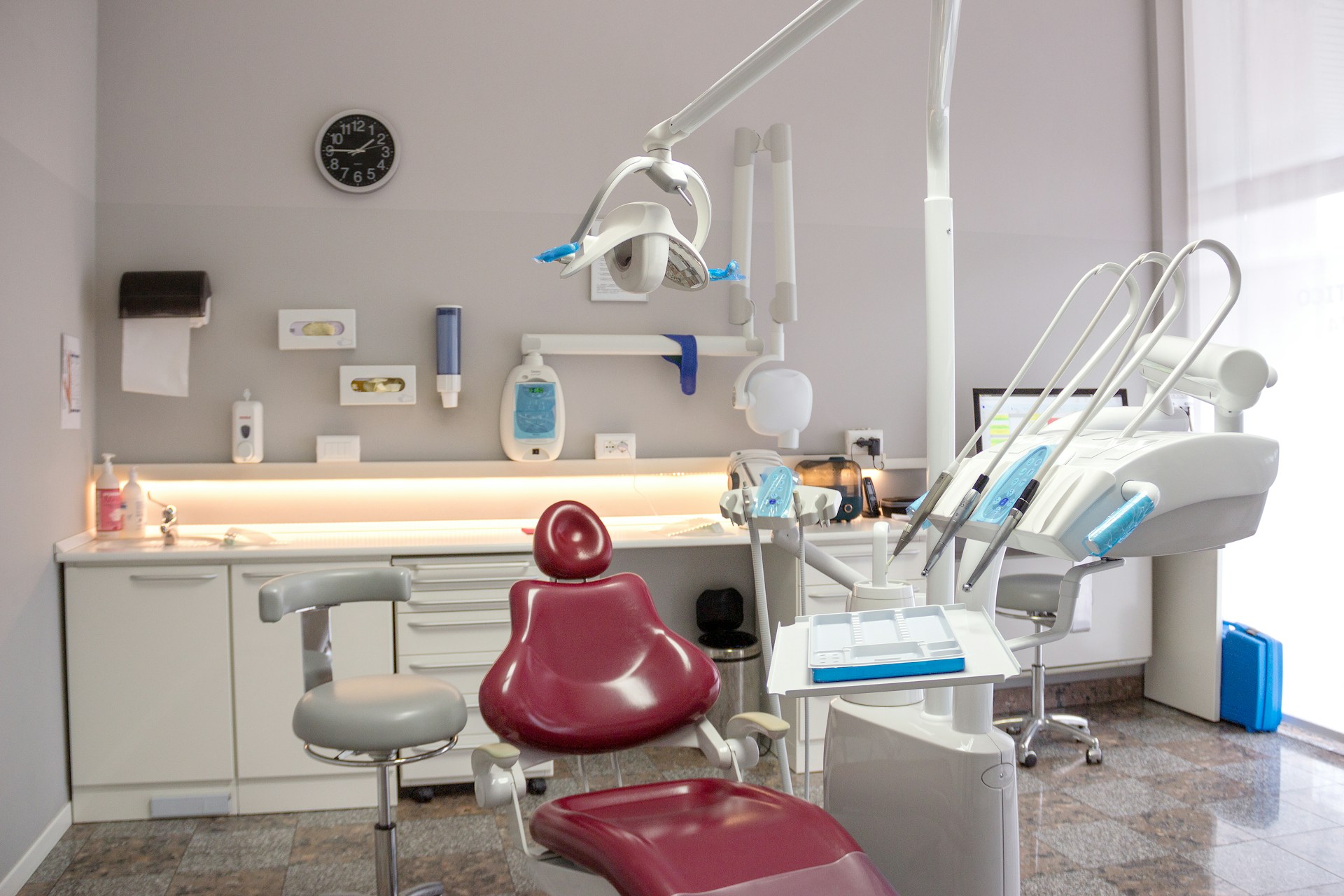How to Stop Missing Patient Phone Calls at Your Dental Practice Without Hiring More Staff

Every missed call is a patient choosing your competitor instead of you. With dental practices losing significant revenue annually from unanswered phones, the solution isn't hiring more staff—it's leveraging AI technology that answers every call, books appointments 24/7, and delivers measurable ROI within months.
Key Takeaways
- 35% of dental practice calls go unanswered, costing practices significant annual revenue
- Most missed callers never call back and immediately contact competing practices instead
- AI receptionists deliver strong ROI while answering 90%+ of calls without adding payroll
- Modern VoIP systems reduce phone costs while adding critical call management features
- Practices implementing AI solutions report thousands in additional monthly revenue within 90 days
- Technology adoption requires only 2-4 hours of staff training with full deployment in 4 weeks
The Hidden Revenue Drain in Your Reception Area
Your dental practice is losing money every time the phone rings unanswered. Research shows that dental practices miss an average of 35% of incoming calls, with some studies documenting rates as high as 68%. When you consider that each new patient brings significant first-year value and lifetime value of $2,000-$4,000, those unanswered rings translate directly to lost revenue.
The math is brutal: if your practice receives 75 new patient inquiry calls monthly and misses 35%, you're losing 26 potential new patients. Yet most practices remain unaware of this silent revenue killer because they lack proper call tracking metrics.
Why Dental Practices Miss So Many Calls
The root cause isn't lazy or incompetent staff—it's structural overload. Your front desk team simultaneously manages:
- Patient check-ins and check-outs
- Insurance verification and claims processing
- Appointment scheduling and rescheduling
- Payment collection and billing questions
- Supply ordering and inventory management
- Plus answering every incoming call
Studies show that task-switching reduces cognitive performance by up to 40%. When your receptionist is verifying insurance for a waiting patient and the phone rings, they face an impossible choice: ignore the current patient or miss the call.
The staffing crisis compounds these challenges. 90% of dental practices report difficulty recruiting qualified staff, with 31% of current dental assistants approaching retirement within five years. Even if you wanted to hire additional help, finding and retaining quality staff has become increasingly difficult.
Peak Times Create Perfect Storm Conditions
Call volume patterns create predictable failure points throughout the day:
Monday Mornings (8:00-10:00 AM): Call volumes spike significantly above average precisely when staff are busiest with weekend emergency follow-ups and the week's first appointments.
Lunch Hours (12:00-1:00 PM): Patients call during their own lunch breaks, but your coverage is minimal as staff rotate through their breaks.
After Hours: Patients are three times more likely to call during evenings and weekends, yet 80% hang up without leaving voicemail when they reach your answering machine.
Traditional Solutions No Longer Work
The Hiring Trap
Adding another receptionist seems logical until you calculate the true cost. Beyond the $32,126 average annual salary, you'll pay benefits, payroll taxes, training time, and workspace expenses. Total cost easily exceeds $45,000 annually—and that's if you can find someone qualified in today's tight labor market.
Answering Service Limitations
Traditional answering services ($140-$800 monthly) only take messages. They can't schedule appointments, answer insurance questions, or integrate with your practice management system. Patients experience a disconnected, impersonal interaction that often drives them to call another practice instead.
The Voicemail Black Hole
Relying on voicemail is practice suicide. 87% of new patients who encounter voicemail never call back. They've already moved on to your competitor who answered on the first ring.
Technology Solutions That Actually Work
AI Receptionists: Your 24/7 Revenue Generator
AI-powered receptionists have transformed how successful dental practices manage patient communications. These systems deliver capabilities impossible with human staff:
- Answer every call instantly - No holds, no voicemail, no missed opportunities
- Handle unlimited simultaneous calls - Ten patients calling at once? No problem
- Work 24/7/365 - Nights, weekends, holidays without overtime or complaints
- Perfect recall - Never forgets a detail or gives incorrect information
- Direct scheduling - Books appointments directly in your PMS in real-time
The ROI is immediate and measurable. Practices implementing AI receptionists report $8,000 to $12,000 in additional monthly revenue from captured opportunities alone.
VoIP Systems: Modern Infrastructure for Modern Practices
Voice over Internet Protocol (VoIP) systems provide the foundation for improved patient satisfaction scores. Key capabilities include:
- Intelligent call routing - Automatically directs calls to the right person
- Mobile integration - Staff can answer office calls from anywhere
- Call analytics - Track metrics to identify and fix bottlenecks
- Screen pops - Patient information appears before answering
- Automatic failover - Calls redirect to mobile during outages
At $16-$40 per user monthly, VoIP systems cost 60% less than traditional phone lines while delivering exponentially more functionality.
Real-World Success Stories
Multi-Location DSO Transformation
Unified Dental Care, operating eight locations across Michigan, implemented an AI receptionist system and achieved:
- 12% revenue increase ($100,000+ monthly)
- 17% reduction in front desk headcount
- 24% increase in profit margins
- 100% call answer rate
Solo Practice Success
Normandy Lake Dentistry in Florida maintained their 90% call answer rate target despite receiving thousands of monthly calls. Their operations manager reported: "Every correction we needed was instantly applied within minutes."
Industry-Wide Results
SGA Dental Partners, operating 120+ practices, deployed AI communications across 46 locations and achieved:
- $90,000-$102,000 EBITDA increase in four months
- 900 new patients gained
- 70% conversation automation rate
Implementation Roadmap
Week 1: Assessment and Planning
- Document current missed call rates and peak times
- Calculate revenue loss from missed calls
- Verify PMS compatibility requirements
- Set measurable improvement goals
Week 2-3: System Setup
- Configure AI receptionist with practice information
- Integrate with practice management system
- Set up call routing rules and schedules
- Create escalation procedures
Week 3-4: Testing and Training
- Run parallel testing with existing systems
- Train staff on monitoring dashboards (2-4 hours total)
- Refine scripts and responses based on actual calls
- Document procedures for ongoing optimization
Week 4: Full Deployment
- Launch with after-hours coverage first
- Expand to business hours after confirming performance
- Monitor metrics daily for first month
- Adjust configurations based on results
Why Arini Stands Apart in AI Reception Solutions
While multiple AI receptionist options exist, Arini delivers unique advantages specifically designed for dental practices seeking to reduce missed call rates and reduce front desk labor costs.
Arini goes beyond basic call answering with its AI-native patient engagement platform that includes:
- Customizable Intake Workflows: Separate flows for new vs. existing patients with dynamic questionnaires capturing exactly the information your practice needs
- Outbound Call Campaigns: Automatically convert recall lapses to reactivated patients and reduce no-shows with intelligent phone outreach
- White-Glove Onboarding: Arini's team programs your AI receptionist to mirror your exact front desk procedures, ensuring seamless integration
- Deep PMS Integration: Real-time scheduling in Dentrix, Eaglesoft, Open Dental and other major systems
- Workflow Engine: Build complex multi-channel sequences like "Text 5 days before, call 3 days before if unconfirmed, alert front desk day-of"
Unlike generic AI receptionists, Arini was built by MIT AI experts with deep dental industry knowledge. The platform helps practices attract more patients while improving appointment scheduling speed.
For practices serious about never missing another opportunity, Arini's enterprise solutions provide the customization and support needed to transform patient communications. Learn more about their approach to reducing costs for dental offices or book a demo to see the platform in action.
Industry Benchmarks Reveal the Opportunity
Healthcare call center metrics highlight the gap between current dental practice performance and what's achievable:
- Healthcare industry average speed to answer: 3 minutes 22 seconds
- Best-in-class abandonment rate: under 3%
- Healthcare first-call resolution rate: 71%
- 60% of patients abandon calls if not answered within one minute
When practices achieve these benchmarks through AI technology, revenue improvements follow predictably.
Frequently Asked Questions
How quickly can an AI receptionist be implemented in my practice?
Most AI receptionist systems can be fully operational within 2-4 weeks. The process includes initial setup (1 week), integration with your practice management system (1 week), testing and staff training (1 week), and full deployment (1 week). Some providers offer expedited implementation in as little as 48 hours for basic configurations.
Will patients know they're talking to an AI instead of a human?
Modern AI receptionists use natural language processing that sounds remarkably human-like. Most patients don't realize they're speaking with AI unless explicitly told. The systems handle complex dental terminology, insurance questions, and even detect patient anxiety to respond appropriately. Patient satisfaction scores often improve because AI provides consistent, accurate information without putting callers on hold.
What happens if the AI can't handle a specific situation?
AI receptionists are programmed with intelligent escalation protocols. When encountering complex situations beyond their scope—such as medical emergencies or upset patients requiring special attention—they seamlessly transfer to available staff with complete context about the conversation. The AI can also flag high-priority calls for immediate human attention while handling routine inquiries independently.
How much does an AI receptionist cost compared to traditional solutions?
AI receptionists range from $199 to $1,299 monthly depending on features and call volume. Compare this to hiring additional staff ($32,126+ annually plus benefits) or traditional answering services ($140-$800 monthly with limited functionality). Most practices see positive ROI within 30-90 days through increased appointment bookings and reduced labor costs.
Can an AI receptionist integrate with my existing phone system and practice management software?
Yes, most AI receptionists integrate with popular dental PMS platforms including Dentrix, Eaglesoft, Open Dental, and others. They work with existing phone systems or can be paired with modern VoIP solutions for enhanced functionality. During vendor selection, verify specific compatibility with your current systems to ensure seamless integration.









